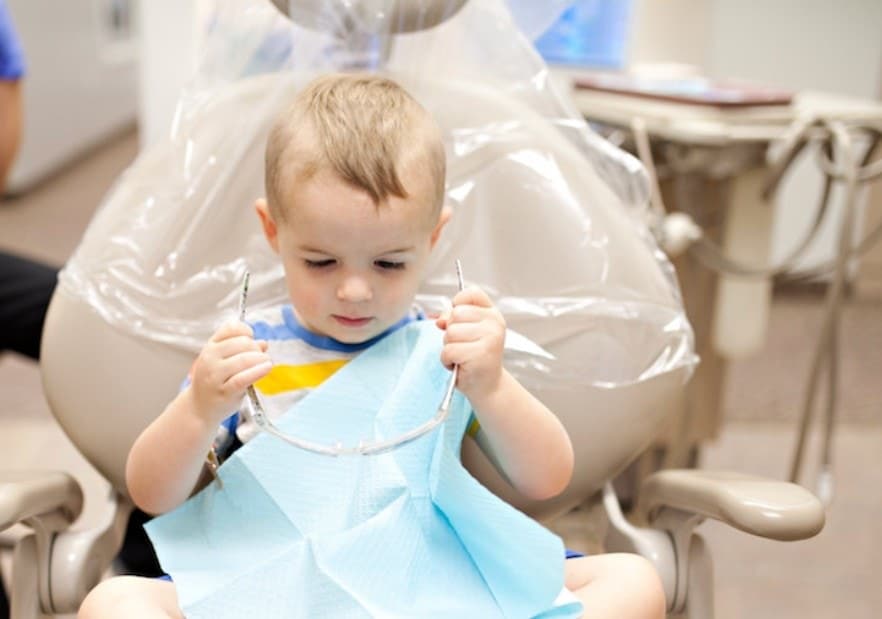My baby was misdiagnosed with Trisomy 18

What it feels like to hear your baby might have a genetic disease.

“If the baby is born, she likely won’t make it to her first birthday.”
I could already feel her kicking inside me when our doctor told us the news.
It was just after our anatomy check and gender reveal appointment. The ultrasound took what seemed like forever. We were in the room for more than 45 minutes. When the sonographer told us our baby was a girl, I was so happy, I cried. I had dreamed of a little girl with dark hair and squinty eyes, just like her dad. But when the sonographer asked me if I had done the genetic screening, I knew something was wrong.
Once the doctor came in the room, there was a distinct lack of candy coating. No bushes to beat around. “Do you see these dark spots on your baby’s brain?” she asked. “Those are a distinct marker for Trisomy 18.”
She said it like I should know what Trisomy 18 was. My husband’s face turned white. He’s a physician, so he knew.
About 2,500 pregnancies in the U.S. are affected by Trisomy 18. Most of those babies don’t survive the second or third trimester. Those who do face heart defects, kidney problems, clenched hands, clubbed feet, and several developmental delays.
Just a few weeks before, my husband and I had opted out of the genetic test we were offered at the 12-week appointment with little thought. We had a quick conversation that went something like this: we’re not going to terminate no matter what, so what will be will be. We didn’t even consider life-threatening abnormalities.
The next 48 hours consisted of inconsolable crying, praying, worrying, and not talking to any of our family about the possibility that we would lose this tiny baby girl we hadn’t even met yet.
My husband, who was on break from his department at the same hospital, went back to work. I got my blood drawn for a quad screen test, which would let us know for sure about Trisomy 18, and somehow ended up in bed, though I barely remember seeing the road on my 20-minute drive home.
It took the longest two days to hear back about the screening results. And while waiting, at home, I did my own research.
I learned there are a small number of T18 babies that are able to survive into their twenties and thirties, though developmental delays mean they need constant caregiving. I’ve since learned a friend’s brother, in his early twenties, was born with Trisomy 18. He’s happy, has a job and more Facebook friends than I do.
On day two of waiting, I emailed the doctor first thing in the morning. Nothing. By the end of the day, I called her office.
The quad screen came back, and it was good news. No indication that my baby was likely to have Trisomy 18 or any other chromosomal abnormalities. In fact, the doctor said, it was likely that the baby’s brain hadn’t fully developed and those “dark spots” were just places where the brain wasn’t mature.
It turned out they had scheduled my 20-week sonogram at 17 weeks, and I just showed up when I was told to. Had I known that coming in early would mean I was going to be told my baby could die and that I would spend the next two days in a tear-induced fog, I would have demanded to come in at 20 weeks or later. And I may have even opted for the genetic tests.
According to the American Pregnancy Association, women who have a family history of birth defects, are over the age of 35, have diabetes, use harmful medications, have had a viral infection during pregnancy, or have been exposed to high levels of radiation should take the test. None of those applied to me and likely won’t during my next pregnancy, but the test is easy and could save days and hours of agony. So with clear 20/20 hindsight, my husband and I will do the quad screen test in future pregnancies.
The test determines your likelihood of giving birth to a baby with Trisomy 21 (down’s syndrome), Trisomy 18 (Edward’s syndrome) or any other chromosomal abnormality. It also helps you plan ahead for the future. The APA says this test is essential in helping parents of children with chromosomal abnormalities find potential interventions to help their babies, like fetal surgery for spina bifida. It also gives them the time they need to plan for a child with special needs, find a support group and address lifestyle changes. The quad screen also gives parents the opportunity to decide if carrying a child with such abnormalities to term is right for them.
The case for the quad screen is simple: it doesn’t hurt mom or baby; and whether you choose to learn the gender of your baby or not, you will find out if there are any physical markers for chromosomal abnormalities at your anatomy scan sonogram. Doctors need to know so they can be prepared; you need to know so you can be prepared. If for some reason, your sonographer finds a physical marker for a fatal abnormality, you’ll want to have those quad screen results in your back pocket.
And for parents who are just learning their baby suffers one of these abnormalities, there are so many support groups online and likely in your area. Check out trisomy18.org, trisomy.org or trisomy18support.org. Connect with other parents in similar situations and find a friend to take you to coffee who will empathize, support and be there for you.
I’m now nearing the end of my pregnancy, and I return to the sonographer every 3-4 weeks to rescan the baby’s brain. By week 21 though, her sweet little brain was perfect. I can’t wait to fill it with Otis Redding and all the names we call our golden retriever and, when she’s old enough, with J.D. Salinger short stories.
Photography by Hannah Leigh Photography.





































